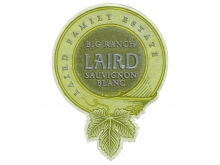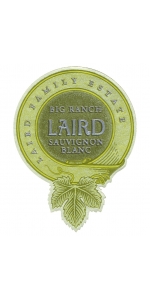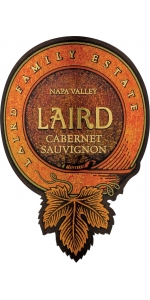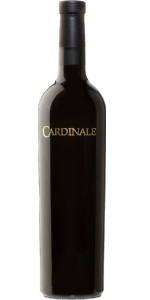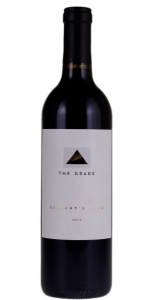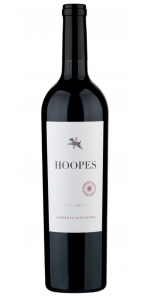Laird Sauvignon Blanc Napa Valley 2019
| Country: | United States |
| Regions: | California California (Napa) |
| Winery: | Laird |
| Grape Type: | Sauvignon Blanc |
| Organic: | Yes |
| Vintage: | 2019 |
| Bottle Size: | 750 ml |
Laird Sauvignon Blanc Napa Valley is made from 100 percent Sauvignon Blanc
Vineyard: 100% Big Ranch Road
Appellation: Oak Knoll District of Napa Valley and Rutherford
Varietal: 100% Sauvignon Blanc
15% of Big Ranch fermented in Neutral Oak barrels + 2% of Smith Ranch fermented in Neutral Oak Barrels.
This lively and prolific varietal thrives in alluvial deposits composed of gravelly sand and gravelly loam, with good water retention and moderate fertility. Our Napa Valley Sauvignon Blanc is crafted in an approachable, fruit-forward style that is typical of the varietal and expressive of its terroir.
Tasting Notes: Translucent gold color leads to notes of juicy ripe pineapple, jasmine, Kaffir lime and Juicy Fruit gum entice the nose. Balanced, yet vibrant body of acidity tantalizes the palate with pineapple, passion fruit and Charentais Melon; a refreshing layer of minerality hits your mid-palate. The elegant, floral finish opens into a complex balance of white peaches, nectarines.
Laird Cabernet Sauvignon Napa Valley is made from 100 percent Napa Cabernet.
This 100% Cabernet Sauvignon is sourced from three vineyards: Mast Ranch, for its earthy and robust structure, Flat Rock Ranch, for its fruit-forward characteristic and silky structure, and Linda Vista Ranch, for its juicy and vibrant approach-ability.
Tasting Notes: Opaque ruby color with a tinge of purple introduces developing aromas of blackberry jam, cranberry, and acacia flower. This medium-bodied red wine expresses flavors of ripe black plum, walnut, and cassis on the front of the palate, and is complemented by chewy tannins and juicy cherry on the finish.
Vineyard: 42% Mast Ranch + 35% Flat Rock Ranch + 23% Linda Vista Ranch
Appellation: Napa Valley
Varietal: 100% Cabernet Sauvignon
Cardinale Napa Valley Cabernet Sauvignon is made from 91% Cabernet Sauvignon, 9% Merlot.
Super structured and with minerality to spare, this Cabernet Sauvignon offers a real presence on the palate from start to finish. Generous notes of dark chocolate balance beautifully with a blue and black fruit flavor explosion, finishing with a subtle whisper of rose petal.
Reviews:
- James Suckling 98 Points
-Jeb Dunnuck 98+ Points
The Grade Cabernet Sauvignon Serpent's Back Napa Valley is made from 100 percent Cabernet Sauvignon.
Review:
The 2019 Cabernet Sauvignon Serpent's Back shows a more aromatic, high-toned side of this site. Bright red/purplish berry fruit, pomegranate, cinnamon and sweet floral accents are all laced together. The Serpent's Back is the most refined of these three Cabernets, but it has plenty of Calistoga punch.
-- Antonio Galloni 95 Points
The Grade Cabernet Sauvignon Serpent's Back Napa Valley is made from 100 percent Cabernet Sauvignon.
Review:
The 2019 Cabernet Sauvignon Serpent's Back shows a more aromatic, high-toned side of this site. Bright red/purplish berry fruit, pomegranate, cinnamon and sweet floral accents are all laced together. The Serpent's Back is the most refined of these three Cabernets, but it has plenty of Calistoga punch.
-- Antonio Galloni 95 Points
Hoopes Cabernet Sauvignon Napa Valley is made from 100 percent Cabernet Sauvignon.
“Made with the same care and thoughtfulness of our single vineyard series, the Hoopes Napa Valley Cabernet Sauvignon is a blend of fruit from a rich variety of sites. The synthesis of these vineyards, which represent the complex tapestry of Napa terroir, results in sublime balance, intense aromas and luscious textures that bring the diverse valley into harmony in a glass. Born out of curiosity, this Cabernet Sauvignon has matured into a stunning wine, which over delivers in intensity and richness. We are proud of this beautiful example of what the Napa Valley can do.”
This wine has a very pretty fruit-forward nose filled with plummy sweet tarts, cherry compote, cocoa nibs, hard candy, cedar box, and allspice. The entry is fresh and clean with a core of delicious generous fruit. It has a lovely elegant texture, weighty middle and resolves into a mocha filled finish.
Laird Sauvignon Blanc Napa Valley is made from 100 percent Sauvignon Blanc
Vineyard: 100% Big Ranch Road
Appellation: Oak Knoll District of Napa Valley and Rutherford
Varietal: 100% Sauvignon Blanc
15% of Big Ranch fermented in Neutral Oak barrels + 2% of Smith Ranch fermented in Neutral Oak Barrels.
This lively and prolific varietal thrives in alluvial deposits composed of gravelly sand and gravelly loam, with good water retention and moderate fertility. Our Napa Valley Sauvignon Blanc is crafted in an approachable, fruit-forward style that is typical of the varietal and expressive of its terroir.
Tasting Notes: Translucent gold color leads to notes of juicy ripe pineapple, jasmine, Kaffir lime and Juicy Fruit gum entice the nose. Balanced, yet vibrant body of acidity tantalizes the palate with pineapple, passion fruit and Charentais Melon; a refreshing layer of minerality hits your mid-palate. The elegant, floral finish opens into a complex balance of white peaches, nectarines.
After nearly 50 years in the wine business, we understand the ins and outs of the industry, from the trends to the challenges. We believe that our success is due to our vineyard expertise as well as our shared goal to produce great estate wines.
With a concentration on Napa and Carneros vineyards, we have sought to produce wines that are “a window to a place.” Each one of our vineyards is different in expression, with its own subtle, yet distinctive character and voice. Each year renews in us an intense drive to understand, react to, and work with each vineyard to allow it to reach its full potential. This process, lead by our winemaking and vineyard management team, is crucial for the execution of successful wines.
With a concentration in Napa and Carneros vineyards, we have sought to produce wines that are “a window to a place.” Each one of our vineyards is different in expression: each has a subtle, yet distinctive vineyard voice. With every year there is an intense drive to understand, react to and work with each vineyard to reach its full potential. This process, lead by winemaker and vineyard manager, is crucial for the execution of successful wines.
While growing up to be a big city mechanical engineer in New York City, Ken held on to his family tradition of becoming a farmer. In 1970, Ken and his wife, Gail, purchased their first Napa Valley parcel. This neglected piece of land, adjacent to Tubbs Lane in Calistoga, held 70 acres of worn-down prune trees. With Prohibition forty years gone and Napa Valley positioned to re-emerge as viticulturally significant, Ken and Gail decided to develop the orchard into a grape vineyard. While knowing just short of nothing about viticulture, they were also $150,000 short to properly develop the orchard into a respectable vineyard. Picking up a tattered phone book, Ken went to the yellow pages and found eight listed wineries…Robert Mondavi being the only one he recognized.
With a phone call, Robert Mondavi himself agreed to walk the property. After they discussed soils, vines, yields, irrigation, and proper pruning, Robert agreed to finance a deal with the Lairds if they would plant 50% Gamay. The deal was struck with a resulting vineyard of 50% Gamay and 50% Cabernet Sauvignon. Mr. Mondavi guaranteeing the Laird’s Cabernet “to be the highest harvest price paid in the Valley.” The support and encouragement of Robert Mondavi would allow Ken to return to his passion: his family farming heritage.
By the late 1990’s the Laird vineyard holdings had exceeded 2,000 acres and the idea of making their own premium line of wines began to take shape. Architect, Jon Lail, showed Ken and Gail the plans for the iconic pyramid-shaped, multi-level winery. Construction began on what would become the Red Hen Ranch vineyard property north of Napa. Ken and Gail’s son, Justin, worked side-by-side with Ken in the vineyards and became the Vineyard Manger, while their daughter, Rebecca, became the General Manager of the winery. Rebecca’s daughter, Jillian, was born in 2005, the same year the winery’s first red blend was produced, appropriately named Jillian’s Blend (and it happens to be Laird Family Estate’s most popular wine). Justin’s daughter, Megan, works in finance in New York City. His son, David, is continuing the family’s farming legacy by working with his dad in the vineyards.
The vineyard holdings possess a cross section of geomorphic and microclimate idiosyncrasies that are poised to produce particular grape varieties that thrive in their desired terroir.
From the thick fog and marine winds in Carneros to the volcanic soils mixed with ancient coastal deposits in the lower bench of the Mayacamas Mountains, they farm their vineyards to produce fruit that best complements the hallmarks of the land.
- back
Mordoree Cotes du Rhone Dame Rousse Rose is made from 40% Grenache, 35% Syrah, 15% Cinsault, 5% Carignan, 5% Mourvèdre
Color : rosé, slightly orange (mordorée colour).
Aromas : crystallized oranges and cherries, slightly aniseed.
Palate : very rounded, fresh and long finish.
Ageing potential : 2 to 3 years
Surface : 14 Ha. Yield : 45 Hl./Ha. Vineyard age : 20 years Terroir : clay / chalk,clay / limestone and sandy with pebble stones. Harvest : by hand. Vinification : vat bleeding, temperature control. Estate bottled.
Food pairing: cold meats and delicatessen, fowl, white meats, grilled lamb with Provence herbs, fish soup, fried fish, pastas, pizzas and all Asian dishes.
Review:
"This rosé appears so pretty in the glass with its watermelon hue and presents a refreshing summery nose. Find notes of watermelon slices and yellow peaches sprinkled with sea salt. Think of pairings similar to prosciutto-wrapped melon. This is a solid rosé to enjoy all summer long."
- Wine Enthusiast (May 2023), 91 pts
Holocene Sidereal Pinot Noir is made from 100 percent Pinot Noir.
Single Vineyard dry-farmed, Organic practices
100% whole cluster
Fermented with native yeast
Extended maceration, with gentle extraction techniques
14 months in 20% new French oak
Bottled unfined and unfiltered with minimal SO2
The word sidereal means relating to the stars, particularly when measuring time or astronomical events. Which is weird for an earthly delight of a wine that makes time stand still while you attempt to decipher a vast array of aromas ranging from blackcap raspberries and cherry blossoms to wet slate and moon dust. Blackberries rule on the palate, with Assam tea, bay leaf and black pepper flavors easing along a lithe and nimble mouthfeel. Sidereal is also balance personified

